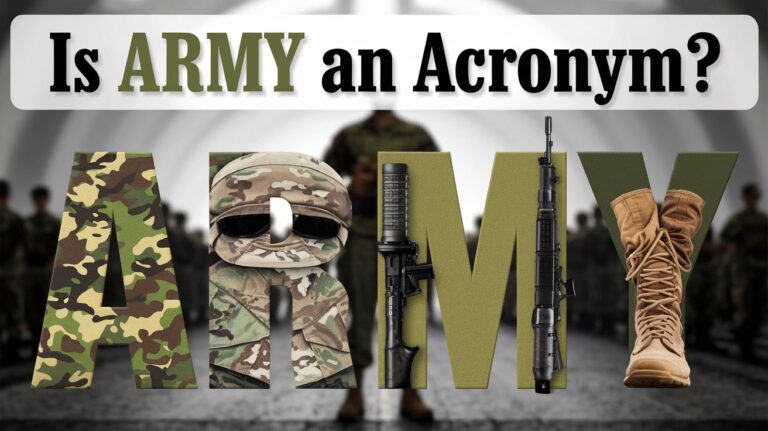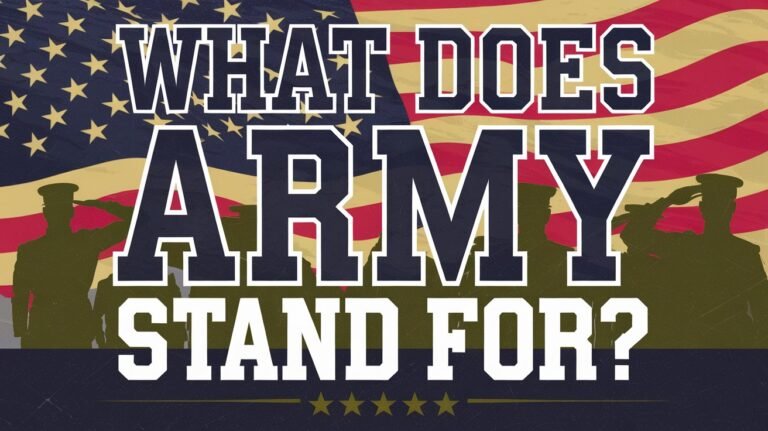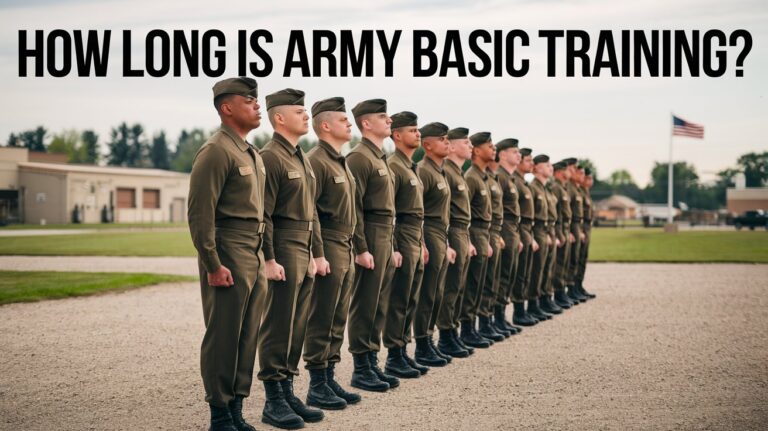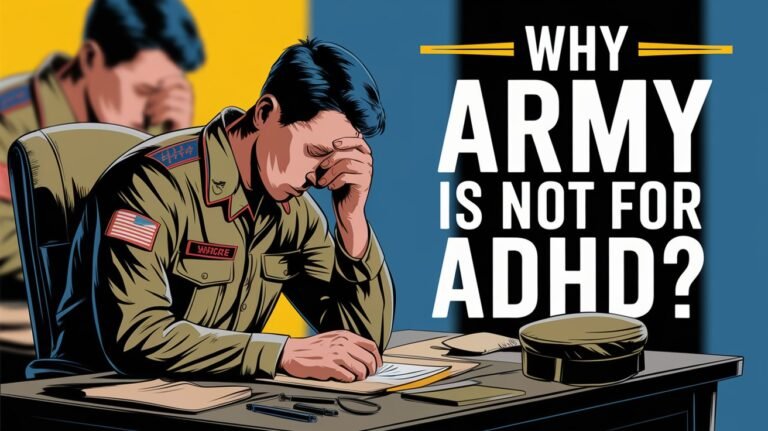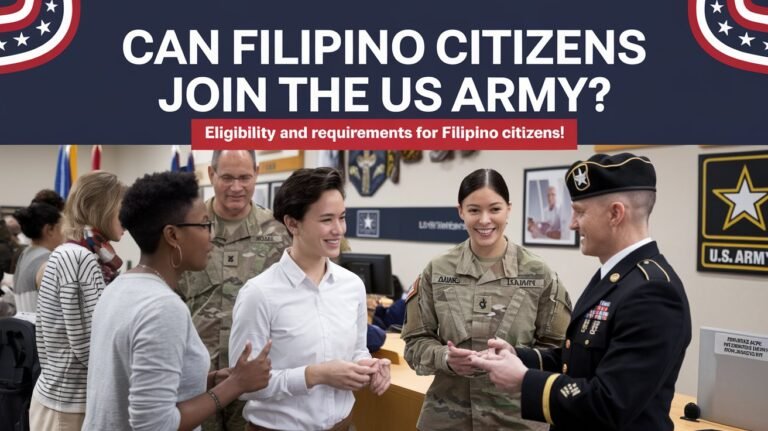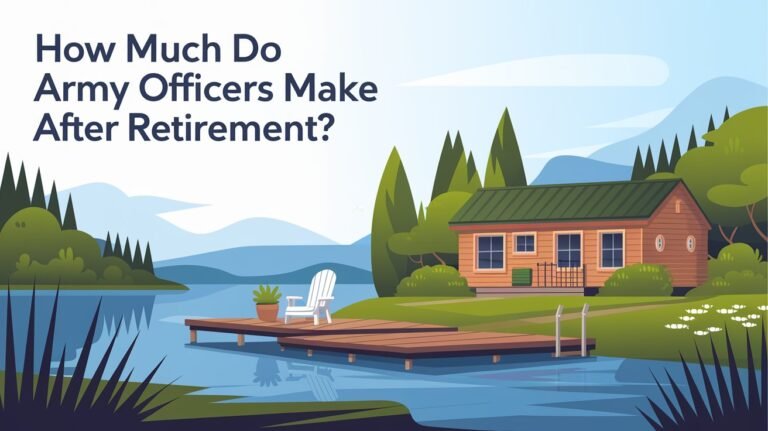What Is A Non Commissioned Army Officer: Role and Responsibilities
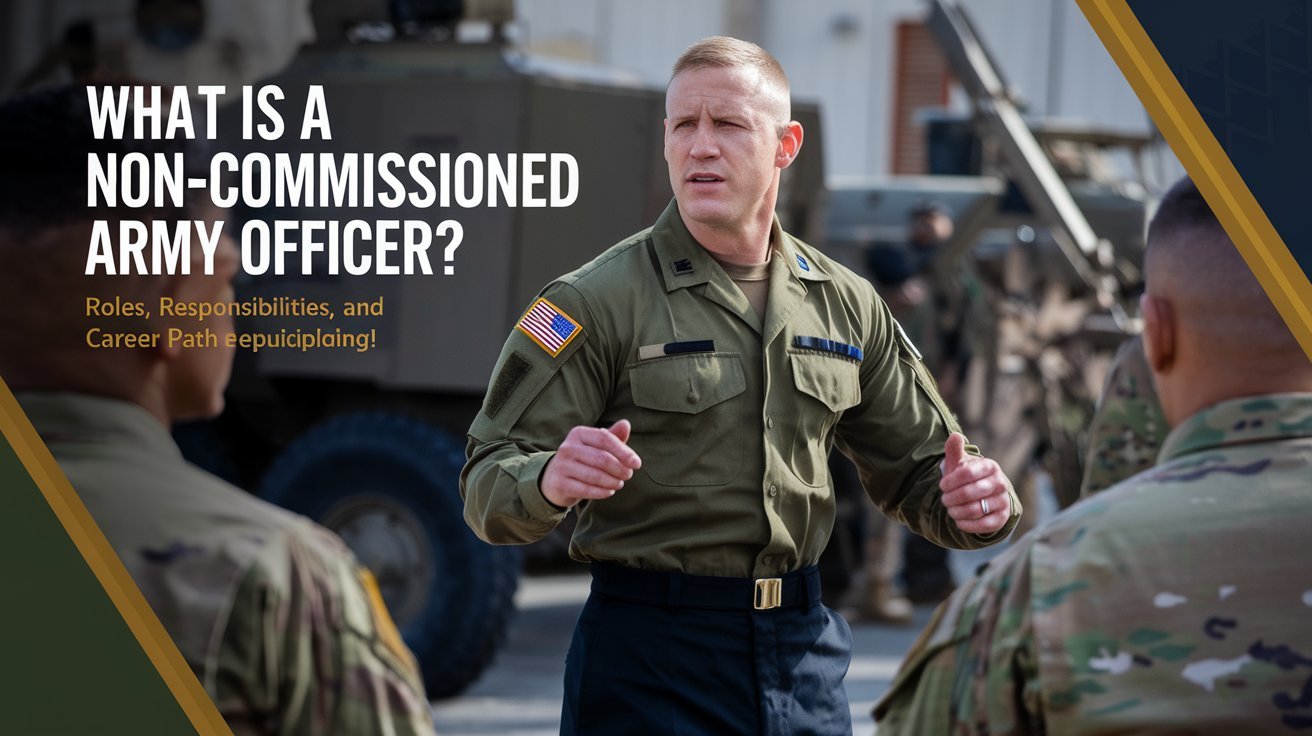
Non-commissioned officers (NCOs) are key in the United States Army. They carry out missions, train others, and connect enlisted soldiers with officers. They’ve earned their place through hard work and service, even though they didn’t get a commission.
NCOs hold ranks from corporal to sergeant major. They are vital for keeping units ready and effective. Their tasks include leading soldiers, mentoring, and handling administrative and tactical duties. They bridge the gap between enlisted and officer ranks, ensuring military operations run smoothly.
What Is A Non Commissioned Army Officer
In the military, non-commissioned officers (NCOs) are key leaders. They guide and train the troops. Unlike commissioned officers, who are college graduates, NCOs rise from the ranks. They bring real-world experience and leadership skills.
Core Functions in Military Structure
NCOs handle many duties. They make sure soldiers are ready, manage operations, and train others. They play a vital role, connecting the gap between officers and enlisted troops.
Distinction from Commissioned Officers
NCOs and commissioned officers have different paths. Officers get their rank through training or academies. NCOs, on the other hand, earn their rank by rising through the ranks. They use their experience and leadership to guide others.
Military Rank Classification
NCOs are divided into junior and senior ranks. Junior NCOs, like corporals and sergeants, lead small teams. Senior NCOs, such as master sergeants, offer guidance and mentorship.
| Rank | Abbreviation | Classification |
|---|---|---|
| Corporal | CPL | Junior NCO |
| Sergeant | SGT | Junior NCO |
| Staff Sergeant | SSG | Senior NCO |
| Sergeant First Class | SFC | Senior NCO |
| Master Sergeant | MSG | Senior NCO |
| First Sergeant | 1SG | Senior NCO |
NCO Ranks and Career Progression Path
The U.S. Army’s non-commissioned officer (NCO) ranks start at corporal or petty officer. They go up to sergeant major or master chief petty officer. Moving up involves time in service, performance, and professional development courses.
Leadership, technical skills, and training milestones are key for NCOs. As they move up, they take on more duties. This expands their influence and importance in the military’s leadership.
| Army NCO Ranks | Promotion Criteria |
|---|---|
| Corporal (E-4) | Typically promoted after a minimum of two years of service |
| Sergeant (E-5) | Promotions based on Army-wide competition points |
| Staff Sergeant (E-6) | Increased responsibilities and leadership compared to Sergeant |
| Sergeant First Class (E-7) | Signifies a wealth of military experience and leadership |
| Master Sergeant (E-8) | No minimum time-in-grade requirements, but candidates must meet specific time-in-service criteria |
| Sergeant Major (E-9) | Highest-ranking NCO, with extensive experience and authority |
NCO career path offers soldiers chances for specialization and more duties. It shapes the U.S. Army’s leadership backbone.
Primary Duties and Core Responsibilities
Noncommissioned officers (NCOs) in the U.S. military are key to upholding standards and leading teams. They handle a wide range of tasks, from training and leadership to administrative work and tactical commands.
Leadership and Training Obligations
NCOs oversee military training, from Basic Training to MOS training. They create training plans and build strong relationships between officers and enlisted. They also set an example for recruits and troops, showing professionalism and following rules.
Administrative Functions
Keeping unit standards is a big part of an NCO’s job. They need to know about policies and regulations and answer questions from junior soldiers. They make sure everyone follows rules, like uniform guidelines and customs. NCOs also lead in drill and ceremonies to boost teamwork and discipline.
Tactical Command Duties
In battle, NCOs lead teams and focus on completing missions. They have specific, directed, and implied duties. NCOs enforce military appearance and conduct rules to keep discipline and readiness high.
| Duty Type | Description |
|---|---|
| Specified Duties | Outlined in regulations, orders, and job descriptions |
| Directed Duties | Assigned by superiors either orally or in writing |
| Implied Duties | Responsibilities necessary for unit functioning and job quality |
Authority and Command Structure of NCOs
Non-Commissioned Officers (NCOs) in the U.S. Army have a big role in the military’s leadership. They get their power from their place in the chain of command. NCOs lead lower-ranking soldiers, making sure orders from officers are followed.
The Army’s structure is based on small teams and squads, led by sergeants. As units grow, so do the ranks and duties of NCOs. For instance, a platoon has a lieutenant and a sergeant first class as the platoon sergeant. At the company level, the first sergeant helps the captain a lot.
NCOs are key in keeping the chain of command strong and orders followed. They can give orders, enforce rules, and make decisions within their limits. This is crucial for keeping the unit together, ready, and successful.
The bond between officers and NCOs is key for the Army’s success. NCOs are seen as the backbone, helping commanders with enlisted matters. Trust, mentoring, and shared goals are important in this partnership.
| Army Organizational Element | Number of Soldiers | NCO Leadership Role |
|---|---|---|
| Team | 4 | Sergeant |
| Squad | 8-16 | Staff Sergeant |
| Platoon | 16-44 | Sergeant First Class |
| Company | 60-200 | First Sergeant |
| Battalion | 300-1,000 | Command Sergeant Major |
| Brigade | 1,500-3,200 | Command Sergeant Major |
| Division | 10,000-16,000 | Command Sergeant Major |
| Corps | 20,000-40,000 | Command Sergeant Major |
Training Standards and Professional Development
The U.S. Army’s Non-Commissioned Officer (NCO) training programs aim to create skilled leaders at all levels. These programs ensure NCOs can lead soldiers, manage resources, and carry out tactical operations. They are designed to make NCOs competent and adaptable.
Basic NCO Training Requirements
The Basic Leader Course (BLC) is the starting point for NCO training. It teaches leadership basics, small unit tactics, and administrative skills for Soldiers from Private First Class to Staff Sergeant. This course helps NCOs lead teams and squads effectively.
Advanced Leadership Courses
As NCOs grow in their careers, they move on to more advanced courses. The Advanced Leader Course (ALC) and Senior Leader Course (SLC) are examples. The ALC teaches skills for leading squads and platoons, while the SLC prepares for leading platoons and companies.
Specialty Training Programs
The Army also offers specialty training to enhance technical and tactical skills. This includes the Master Leader Course (MLC), Sergeants Major Course (SMC), and Structured Self-Development (SSD) courses. These programs give NCOs the knowledge and skills needed for higher leadership roles.
The Army is committed to NCO professional development. It has introduced new training like the Mobile Training Team (MTT) program. This program brings training directly to soldiers in their units. It ensures NCOs stay sharp and ready to lead in any situation.
The Noncommissioned Officer Professional Development System (NCOPDS) is key to the Army’s efforts. It aims to build a force of trusted, adaptable, and innovative NCO leaders. By improving training and listening to combat leaders, the Army is preparing the next generation of NCOs for success.
Enlisted Personnel Management and Supervision
Non-Commissioned Officers (NCOs) in the U.S. Armed Forces are key in managing and supervising enlisted personnel. They act as a bridge between junior enlisted soldiers and commissioned officers. This role is crucial for the military’s success.
NCOs lead and supervise junior enlisted personnel. They assign tasks, check performance, and offer guidance. They help develop enlisted soldiers by spotting their strengths and weaknesses. They also suggest training or promotions.
- Manage personnel records and coordinate duty rosters
- Ensure proper equipment maintenance and accountability
- Uphold military standards and discipline to maintain unit morale and cohesion
- Participate in mission planning and execution, leveraging their operational experience
- Manage resources to ensure troops have the necessary tools for efficient duty performance
Air Force’s enlisted force development guide stresses the importance of a standard career path. It also highlights the need for developing Airman Leadership Qualities (ALQs). NCOs are vital in this process, guiding enlisted soldiers on their military path.
| Key NCO Responsibilities | Impact on Enlisted Soldier Development |
|---|---|
| Personnel Management | Ensure proper records, duty assignments, and equipment accountability |
| Training and Mentorship | Identify strengths, address areas for improvement, and recommend training |
| Upholding Standards | Maintain unit discipline, morale, and cohesion |
| Mission Execution | Leverage operational experience to contribute to planning and execution |
| Resource Management | Ensure troops have necessary tools and equipment to perform duties effectively |
NCO Support Channel Operations
The non-commissioned officer (NCO) support channel is key in the military’s communication and command. It works alongside the formal chain of command. This helps in moving information and tasks efficiently between senior NCOs and enlisted personnel.
This channel makes sure orders, feedback, and concerns are shared well. It keeps the military communication channels working smoothly. It also keeps the NCO support structure and overall army information flow in line.
Communication Flow Process
Senior NCOs like the command sergeant major and first sergeants are vital. They understand and carry out orders from the chain of command. They then pass these orders through the NCO support structure.
This includes section chiefs, squad leaders, and team leaders. This way, the army’s daily operations, training, and equipment are well managed.
Chain of Command Integration
The NCO support channel works well with the formal chain of command. It helps officers in their missions and managing units. Officers and senior NCOs often work closely together.
This allows officers to plan and make decisions. The army information flow gets better. The NCO support channel helps share orders, address concerns, and keep units ready and united.
Combat Leadership and Battlefield Roles
In times of war, non-commissioned officers (NCOs) in the U.S. Army lead the charge. They lead small units and make key decisions under pressure. These veterans are key in making tactical plans and adapting to the battlefield.
NCOs ensure mission success by coordinating troop movements and directing fire. They also keep the unit together. Their leadership is crucial in combat.
Beyond leading, NCOs handle casualty care, equipment maintenance, and reporting. They act quickly in battle, showing their training and experience. NCOs are the Army’s backbone, readying and guiding their teams.
The role of NCOs in combat is vital. Their skills and commitment are essential on the battlefield. They embody the Army’s values, shaping its culture and ethos.
Mission Planning and Execution Responsibilities
Noncommissioned officers (NCOs) are key in the military’s mission planning and execution. They are the backbone of enlisted leadership. NCOs use their knowledge and experience at every stage of planning and carrying out missions.
In the planning phase, NCOs share important information. They talk about their team’s abilities, the readiness of equipment, and possible challenges. Their experience helps spot problems and find ways to fix them, making the plan better.
For mission execution, NCOs lead the way. They work with other units and adjust plans as needed. They prepare their teams, conduct reviews, and look for ways to get better. This helps in the success of future missions.
The Army values “Train as you fight.” NCOs play a big part in training Soldiers for complex situations. They teach teamwork and initiative, helping teams make quick decisions in combat.
Statistics show NCOs make up about 80% of enlisted leaders, with an 85% retention rate. This shows how important NCOs are for unit readiness and success.
Unit Readiness and Maintenance Standards
Keeping military units ready is key for NCOs in the U.S. Army. They make sure everyone is physically fit and mentally sharp. They also train them well for their jobs.
NCOs take care of important equipment too. They check it often and fix it when needed. This keeps their units ready for battle.
They also focus on how people look and where they live. They plan training, check readiness, and tell their superiors how things are going. This helps the Army stay strong and effective.
It’s important for NCOs to keep learning and sharing their experience. This helps the unit work better together. Training programs help them lead their Soldiers well. This ensures everyone is ready for the mission.
Common Concerns
What is a Non-Commissioned Army Officer?
Non-commissioned officers (NCOs) are not commissioned but promoted from the enlisted ranks. They are key to the military, leading missions, training others, and connecting enlisted and commissioned officers.
What are the core functions of NCOs in the military structure?
NCOs lead without a commission, promoted from enlisted ranks. Unlike commissioned officers, they enter through enlisted ranks. They hold ranks like corporal and sergeant.
How do NCOs differ from commissioned officers?
NCOs have roles from leading small units to advising seniors. They focus on soldier welfare, discipline, and mission success.
What are the typical NCO ranks and the career progression path?
NCO ranks start at corporal and go up to sergeant major. Progression comes from time served, evaluations, and courses.
What are the primary duties and core responsibilities of NCOs?
NCOs lead, train, and manage daily operations. They also lead in combat. Their duties are diverse and crucial.
What is the authority and command structure of NCOs?
NCOs’ authority comes from their rank and military rules. They command lower ranks in their unit.
What are the training standards and professional development programs for NCOs?
NCO training is ongoing. Basic courses teach leadership and tactics. Advanced courses focus on strategy and leadership.
How do NCOs manage and supervise enlisted personnel?
NCOs oversee enlisted personnel. They assign tasks, evaluate performance, and mentor. They help in soldier development.
What is the NCO support channel and how does it operate?
The NCO support channel aids in communication and task execution. It ensures information flows well between NCOs and enlisted.
What are the combat leadership and battlefield roles of NCOs?
In combat, NCOs lead small units and make key decisions. They implement plans and adapt to the battlefield.
What are the responsibilities of NCOs in mission planning and execution?
NCOs help plan missions and execute them. They provide input on capabilities and oversee plan implementation.
How do NCOs ensure unit readiness and maintain standards?
NCOs keep units ready by ensuring fitness, training, and equipment. They enforce standards and manage training.

